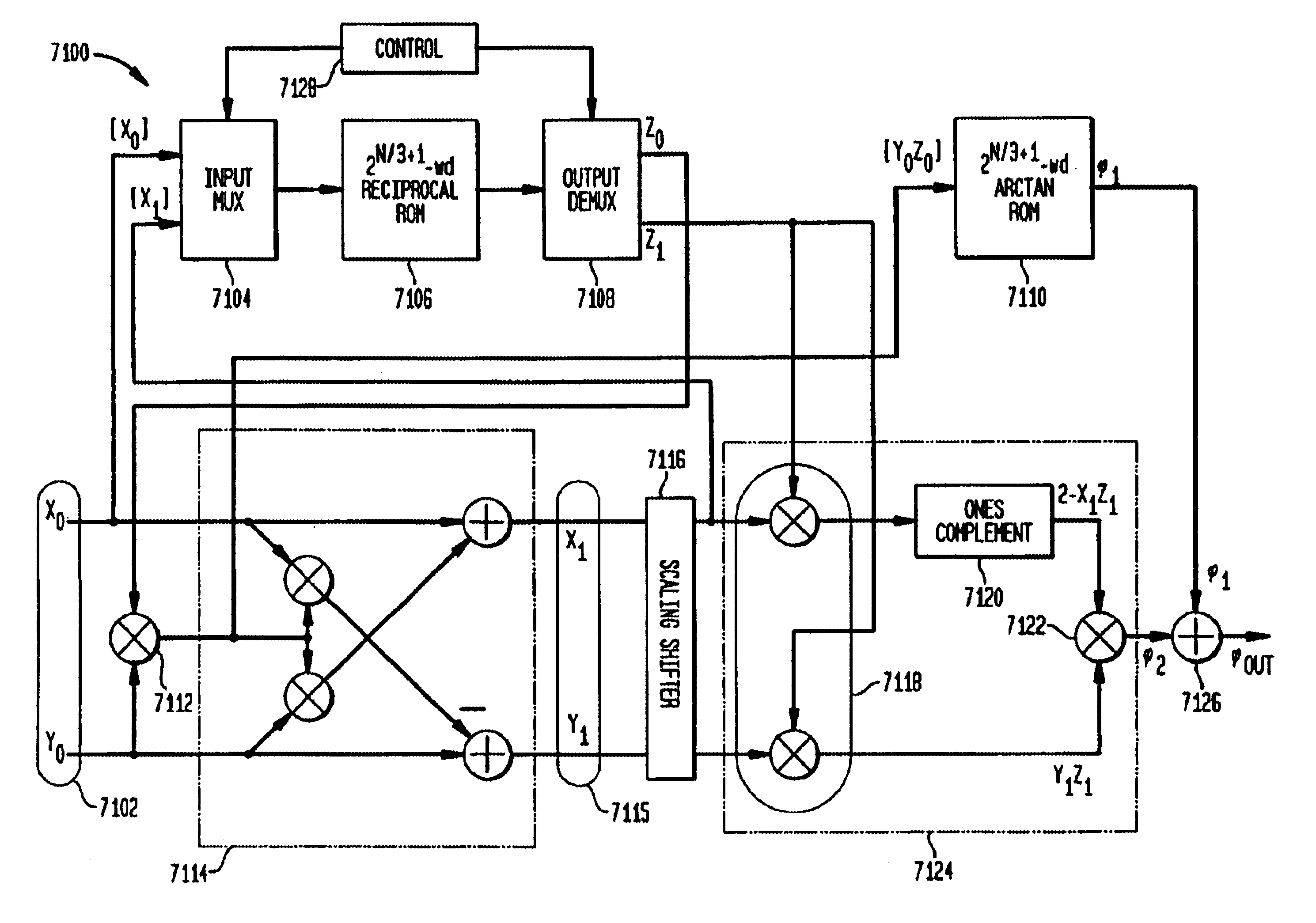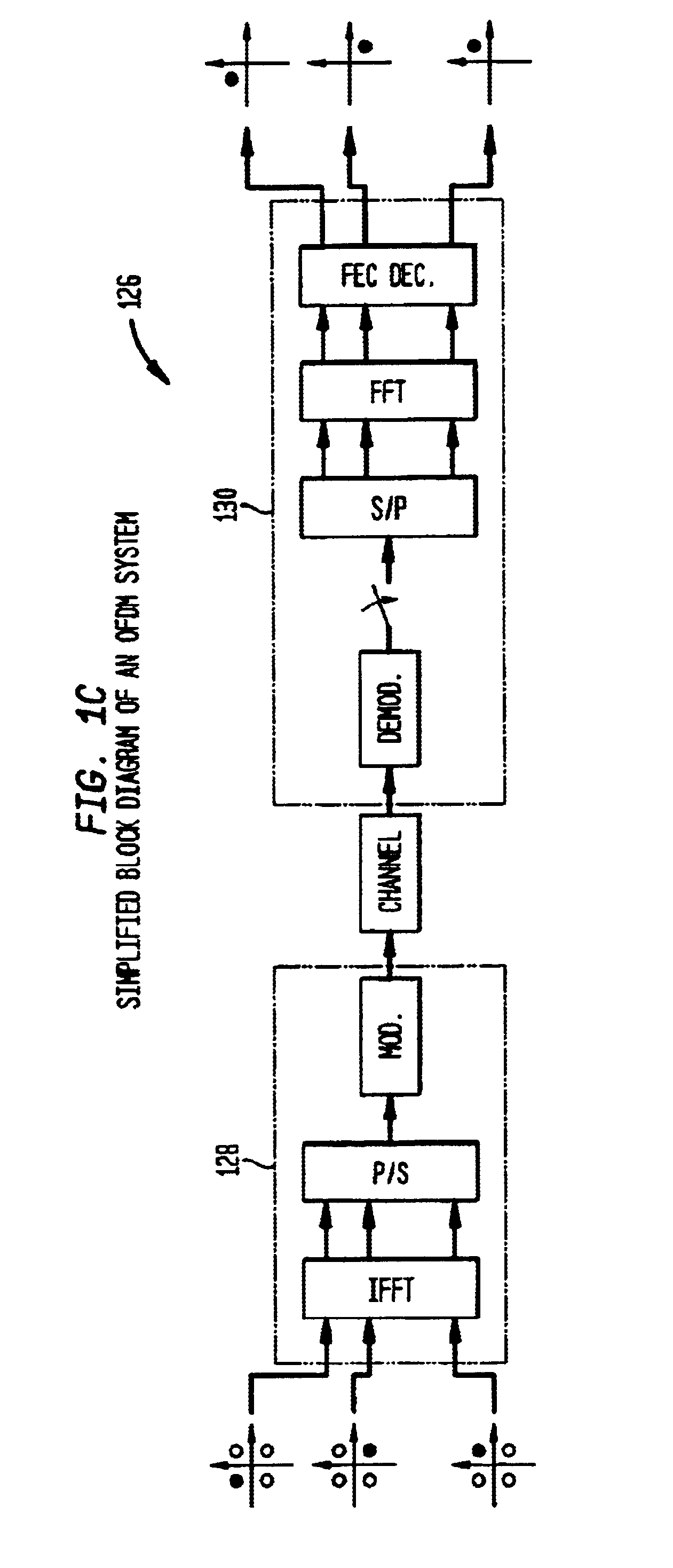Apparatus and method for rectangular-to-polar conversion
a rectangular-to-polar conversion and apparatus technology, applied in the field of digital signal processing and digital communications, can solve the problems of serious degrade system performance and short user data content of such a transmission, and achieve the effect of more accurate tan 2 results
- Summary
- Abstract
- Description
- Claims
- Application Information
AI Technical Summary
Benefits of technology
Problems solved by technology
Method used
Image
Examples
example 2.1
e Fourier coefficients are obtained as:
c1=y(−1)+y(0)+y(1)+y(2)
c1=[y(0)−y(2)]+j[−y(1)+y(−1)]
c2=y(0)−y(1)+y(2)−y(−1). (2.19)
As seen in (2.19), there is no nontrivial scaling multiplier required for N=4.
Example 2.2: We now compute the coefficients ck in (2.9) for N=8. Using the trigonometric identities, we can obtain the following simple form for ck, k=0, . . . , 4: c0=y(-3)+y(-2)+y(-1)+y(0)+y(1)+y(2)+y(3)+y(4)c1={y(0)-y(4)+[-y(-3)+y(1)_+y(-1)-y(3)_]cos(π / 4)}+j{y(-2)-y(2)+[y(-3)-y(1)_+y(-1)-y(3)_]cos(π / 4)}c2={-y(-2)+y(0)-y(2)+y(4)}+j{-y(-3)+y(-1)-y(1)+y(3)}c3={y(0)-y(4)+[y(-3)-y(1)_+(-y(-1)+y(3))_]cos(π / 4)}+j{-y(-2)+y(2)+[y(-3)-y(1)_+(-y(-1)-y(3))_]cos(π / 4)}c4=-y(-3)+y(-2)-y(-1)+y(0)-y(1)+y(2)-y(3)+y(4).(2.20)
The only non-trivial scaling multiplications are those multiplications by cos (π / 4). It appears that four such multiplications are needed to compute all the complex coefficients ck, k=0, . . . , 4. However...
PUM
 Login to View More
Login to View More Abstract
Description
Claims
Application Information
 Login to View More
Login to View More - R&D
- Intellectual Property
- Life Sciences
- Materials
- Tech Scout
- Unparalleled Data Quality
- Higher Quality Content
- 60% Fewer Hallucinations
Browse by: Latest US Patents, China's latest patents, Technical Efficacy Thesaurus, Application Domain, Technology Topic, Popular Technical Reports.
© 2025 PatSnap. All rights reserved.Legal|Privacy policy|Modern Slavery Act Transparency Statement|Sitemap|About US| Contact US: help@patsnap.com



